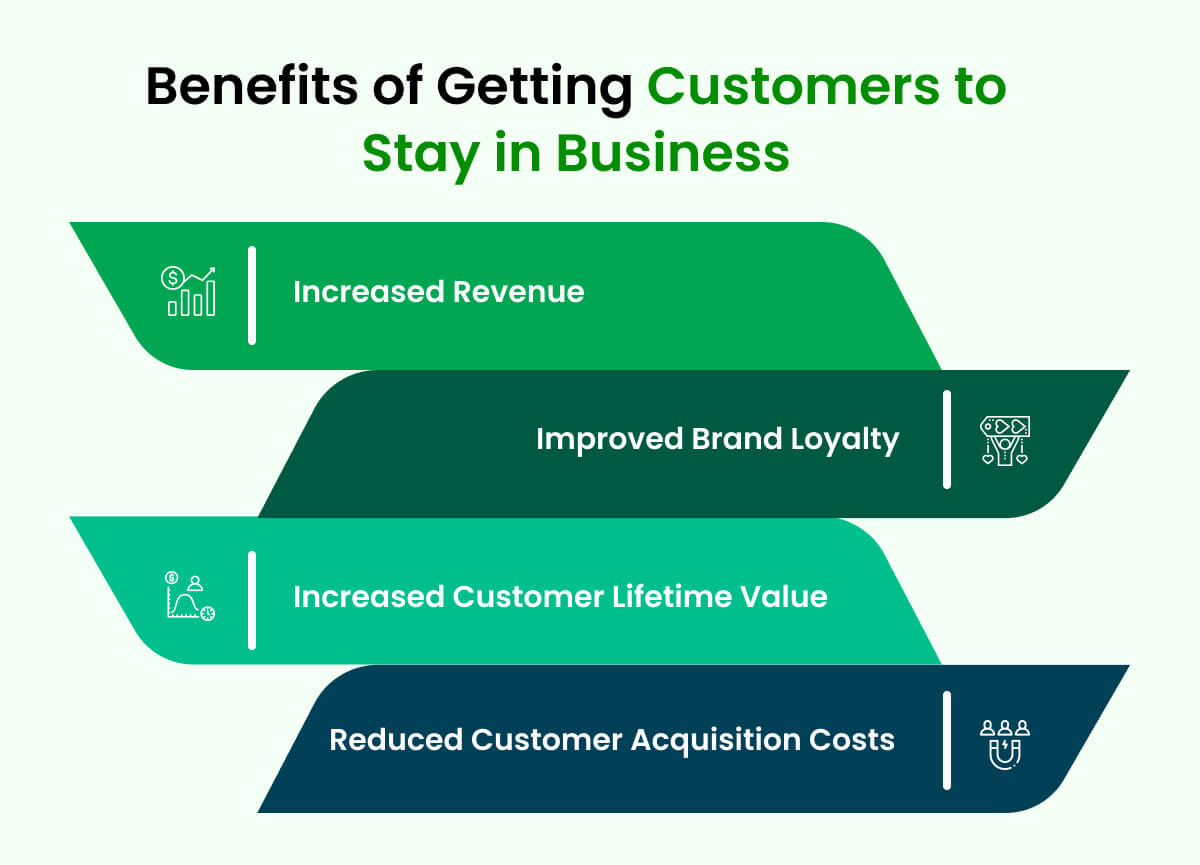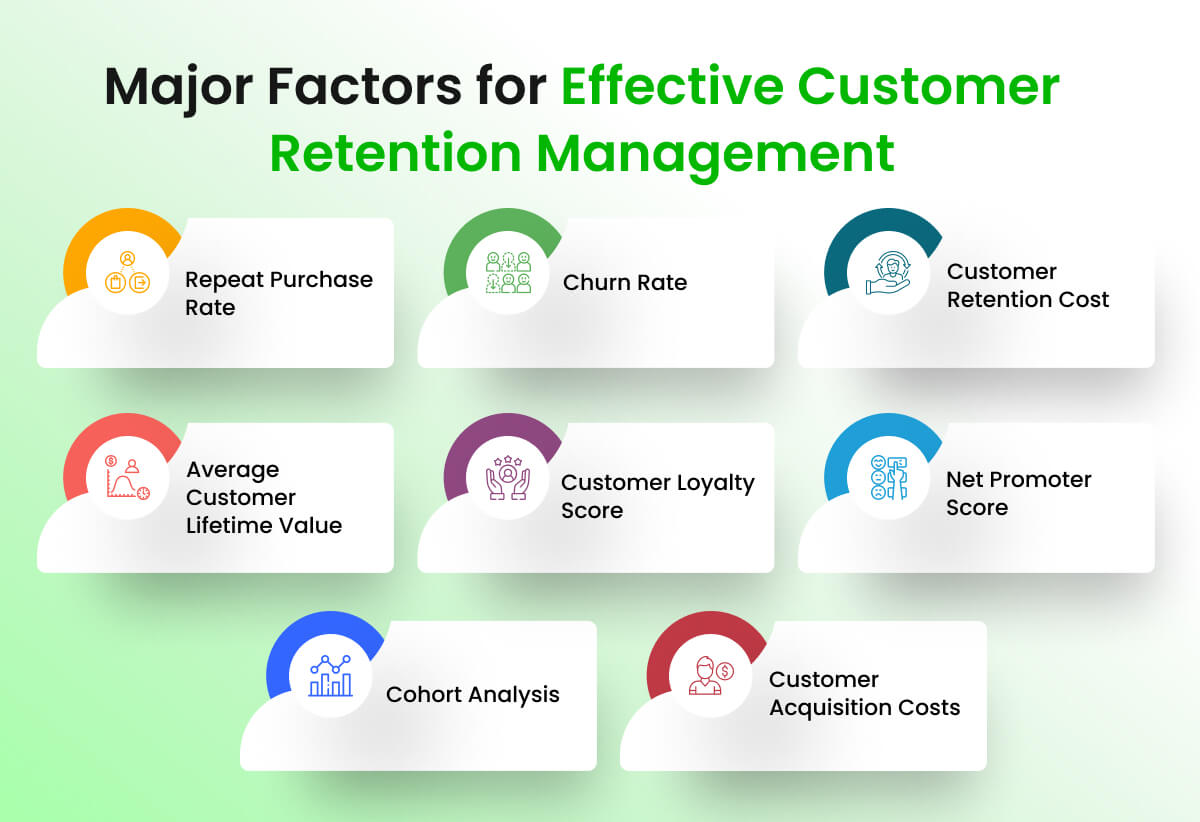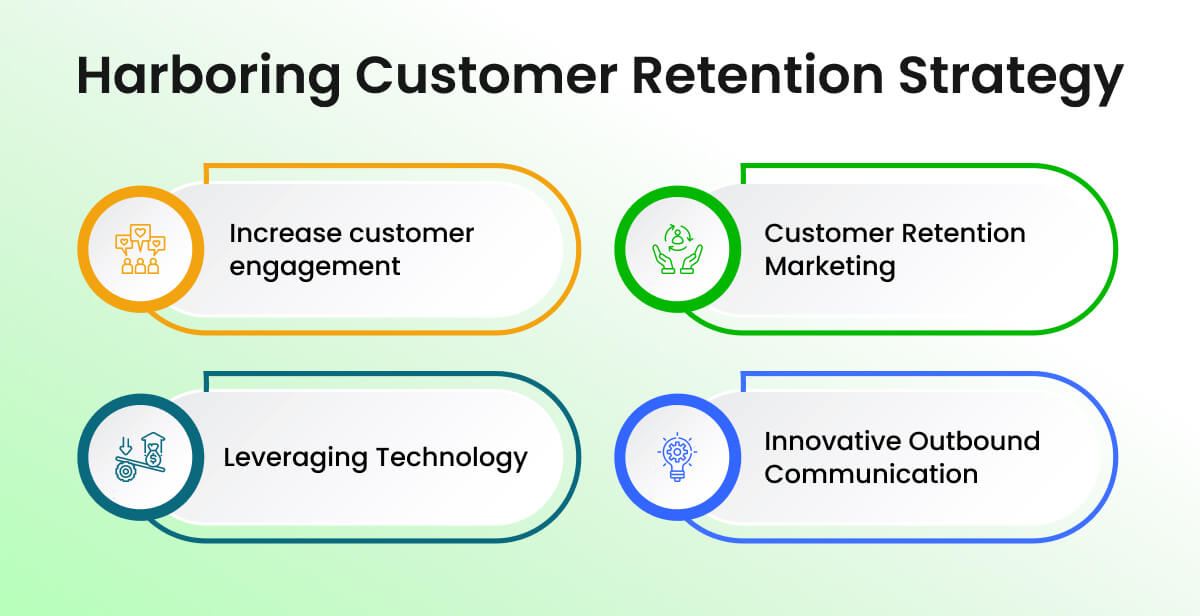 Customer Retention
Customer Retention

04 March, 2023

People will come to your store, ask for a product, end up buying it, and then leave. Whether it is simple or complex, commerce should not be limited to this lifecycle of purchase alone. The inevitable sales will show you the bigger picture of cash-ins in the coming months. Most importantly, the view is much better than making a single sale today. And that’s where you need to derive customer retention.
Whether you are just a start-upper or a big enterprise leader, you will have no choice but to feel the need for this business booster. Let me welcome you onboard at the podium, where you can experience the increase of your profit margin in action.
Contents
If you allow yourself to delve into the depths of this concept, you will find it to be like keeping an old friend around. You don’t always have to be talking, but when you do, it’s like you’ve never been apart. They know your ins and outs and you know theirs, and you can always have a quality time when you get together.
On the contrary, a business without regular customers is like a car without fuel. To think of moving forward with this would be nothing short of a fairy tale.
Prolonging clients’ stay in business will immediately reveal to you why customer retention is important. Let’s get to know about the power of repeat purchases before harnessing it.

Acquiring new customers can be like a never-ending chase, requiring significant resources and effort to attract and convert new prospects. But having clients stay in touch is like cultivating a loyal fan base that can help drive consistent revenue growth. It unleashes a treasure trove of revenue potential.
Retention doesn’t have to mean just keeping customers. There is a big portion of maintaining happiness. With excellent customer service, quick response to needs, and continual improvements come trust and loyalty. This leads to clients becoming ambassadors, taking care of the reputation. It sets the lead generation process on autopilot.
Customer Lifetime Value or CLV is an important indicator that can tell if your business is on the right track. CLV is the total amount of money a customer has spent on your service over the time they were with your business. To define CLV simply: if it increases, it’s good; if it decreases, you should be warned.
Customer Acquisition Costs (CAC) is a popular key metric that can judge the financial performance of any business. You can derive it by dividing all the expenses on acquiring new customers by the total number of customers you got in a certain period of time. It’s quite a headache for any organization. In this case, customer retention can be your way out.
Now it’s time to find ways to nurture the very cash cow. Let’s get to the point of what factors you need to consider to ensure your clients get back to you.

This is the percentage of customers who make a repeat purchase from a business. It is calculated by dividing the number of customers who made a repeat purchase by the total number of customers, then multiplying by 100.
This refers to the rate at which customers stop doing business with a company over a given period. It is calculated by dividing the number of customers lost during the period by the total number of customers at the start of the period, then multiplying by 100.
This refers to the cost incurred by a company to retain its customers. It includes expenses related to customer service, loyalty programs, and marketing efforts aimed at retaining customers.
This refers to the estimated total value that a customer will bring to a business over the course of their relationship. It takes into account the revenue generated by the customer, as well as the cost of acquiring and retaining them.
This is a metric that measures the level of loyalty that customers have towards a business. It can be calculated using a variety of methods, such as customer surveys or analysis of customer behavior.
This is a metric that measures customer satisfaction and loyalty by asking customers how likely they are to recommend a business to others. You can find it simply by deducting the detractor percentage from the promoter percentage. Detractors are the customers who would not recommend the business. On the other hand, promoters are the ones who would recommend the business.
This is a statistical method used to analyze the behavior of a particular group of customers over time. It can be used to track changes in customer behavior and identify patterns that can be used to improve customer retention.
This refers to the cost incurred by a company to acquire a new customer. It includes expenses related to marketing and advertising, as well as the cost of sales and customer service activities aimed at acquiring new customers.
This is the very core section where you are going to know how to retain customers. Let’s get on the game-changing zone.

Think about personalized experiences and rewards for customers. Trendy activities can be relevant to their interests or an effective way to get feedback from them. For example, a retail store can create a loyalty program that rewards customers with discounts and other offers for their continued patronage.
It involves understanding customer needs and providing tailored and personalized experiences. For instance, product recommendations with exclusive offers are a proven method to spark the buying habits of previous customers. When it comes to promoting, custom offers according to the customers’ preferences would ensure the return.
Using data analytics tools to gather insights about your customers plays a big hand in marketing campaigns. Mobile apps and social media are now two popular areas to keep your customers busy in your business.
68% of consumers like chatbots because they provide quick answers. (Userlike)Thanks to chatbots and AI-powered customer service, getting in touch is not just a figure of speech now. Not to mention the personalized newsletter, you don’t have to be present at the customer’s door for the new launch.
Neither are they friendly to you nor neutral about you; you are the one who has to take charge of ice-breaking. The knocking can be in any form, such as following up, giving a gentle reminder, or telling an interesting story to show them you are thinking of them. A personalized video message can be an example of customer retention in this case. If you can ensure providing quality content, it can leave a memorable customer experience.
People coming back to buy something you are promoting means you have definitely won their psychology over. Because of your engaging incentives, they find their comfort zone around your business. This attitude culminates in them recommending your product to their loved ones. However, the customer retention techniques mentioned above are not the only manual to follow. When wandering how to maintain customers, you need to push yourself to change. A longer customer journey requires staying on top of trends and finding new ways to connect with your customers.